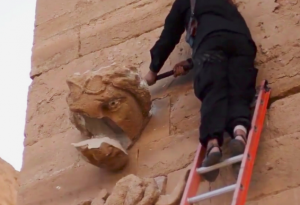“A people without the knowledge of their past history, origin and culture is like a tree without roots,” – Marcus Garvey. When we tell others about who we are, we tend to include where we came from, the dynamic of our family, and other things that have been important to us over our entire lifetime. We explain how our upbringing made us the people that we are today. Why is this so important to us? Why is this what makes us who we are? We do not tell people about our ambitions or dreams when asked about who we are. Instead, we talk about the past, because the past is what we identify with.
Everything we do is rooted in the past. Language, religion, and customs have all been around for thousands of years, yet continue to have a deep meaning to billions of people in the world today. Archeology is fundamental in the process of relating these important concepts of the past to the people of today. An example of this process is repatriation. It is well known that ancestors are very meaningful in Native American culture. Respecting the body of a tribe member after their death is essential in both the fortune of the body’s spirit as well as the tribe itself. When Europeans destroyed Native American burial sites for hundreds of years, it had a serious impact on the Native American culture. Having their ancestors’ bodies rot in national museums with numbers scratched across their foreheads was an absolute atrocity to the Native American culture. The Repatriation Act brought these essentials of the past back to the Native American culture and helped current Native Americans better connect with the past and better understand who they really are. All people need items from the past to help them understand who they are today.
Without these connections to the past, we have no form of identity. Without identity, we have no meaning and no strength. This can be related to the destruction of significant national landmarks throughout the Middle East and Africa by ISIS. Each time the terror group destroys a national landmark, they are also destroying the strength of the group of people they are battling against. If the native people to those lands do not have any connection to the land itself, their culture begins to deteriorate, therefore separating the people as a group. People need landmarks and artifacts to have a connection to the past to make them who they are today.
The past does not restrain us to certain boundaries, but it does help give us a sense of understanding who we are and why we are that way. Each person should be given the right to connect to the past in their own way.
References:
Renfrew, Colin, and Paul G. Bahn. Archaeology Essentials: Theories, Methods, Practice with 295 Illustrations. London: Thames & Hudson, 2015. Print.
http://news.nationalgeographic.com/2016/11/iraq-mosul-isis-nimrud-khorsabad-archaeology/
https://www.nps.gov/archeology/tools/laws/nagpra.htm
http://www.history.org/history/teaching/enewsletter/may03/archintro.cfm
Additional Reading:
http://www.mummytombs.com/world/nativeamerican.html
http://news.nationalgeographic.com/2016/11/iraq-mosul-isis-nimrud-khorsabad-archaeology/



Viewing the dead is an an extremely complicated issue. As you mentioned museums displaying and holding on to Native remains is an egregious practice, one that is currently being combatted in the United States. Many groups oppose the viewing and display of human remains, as well as scientific testing on remains. One famous example of this is with the Spirit Cave Man, despite not being on view, is an excellent case of the inefficiencies of NAGPRA. How is respect involved in the viewing of the dead, physically and virtually?
There seems to be a separation between respecting those who have just passed away, and those who did thousands of years ago. When we see (both physically and virtually) someone who has recently passed away, there seems to be a feeling of empathy towards that individual and others who may have had some type of relationship with them. When we see the remains of someone who passed away thousands of years ago, we do not seem to have that same type of connection or respect towards the individual. We do not see that individual as sophisticated or “human” as us, therefore we do not show that body the same type of respect as we would with someone who recently passed away.
This is especially true when dealing with the bodies of Native Americans. Our culture does not show them as equal human beings, so we do not show their remains ample respect. The fact that museums write numbers on their heads as a form of identification is both disturbing and barbaric. Hopefully, within the near future, our society can learn that all people were actually created equally, not just white people from the 20th century. Every dead individual deserves the same amount of respect, whether they have been dead for 1 year or 10,000 years. The sooner that each society realizes this, the better.